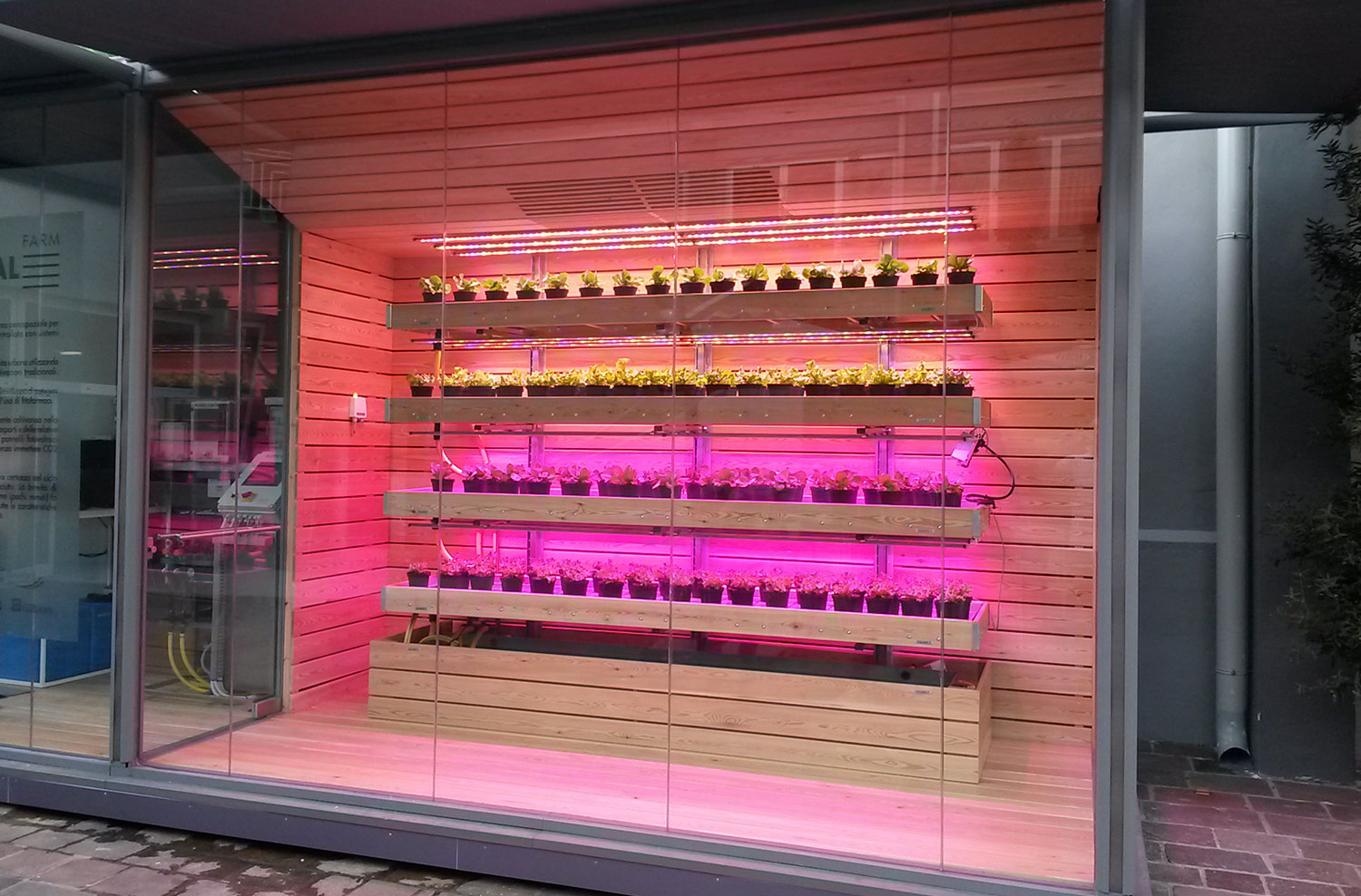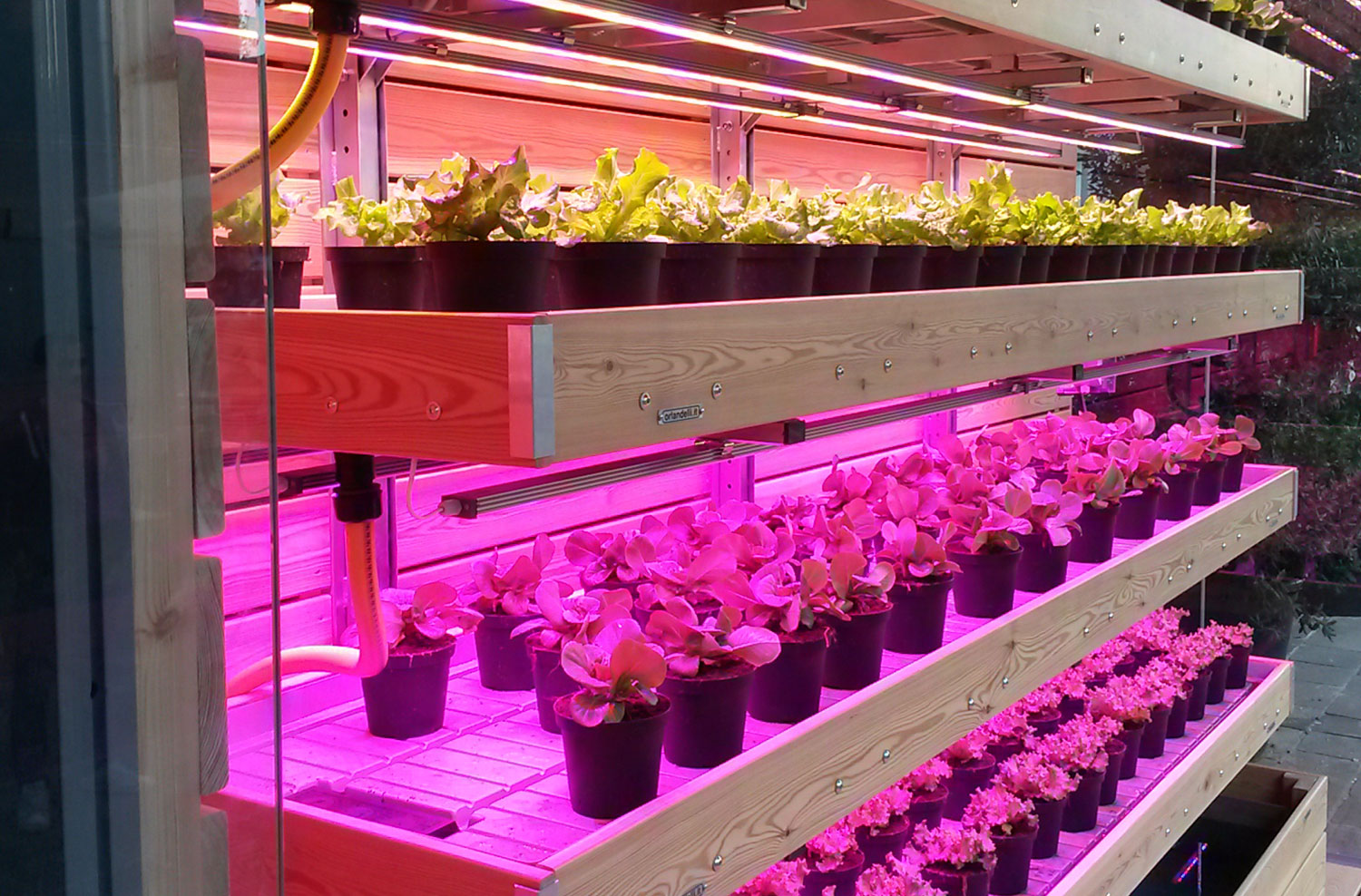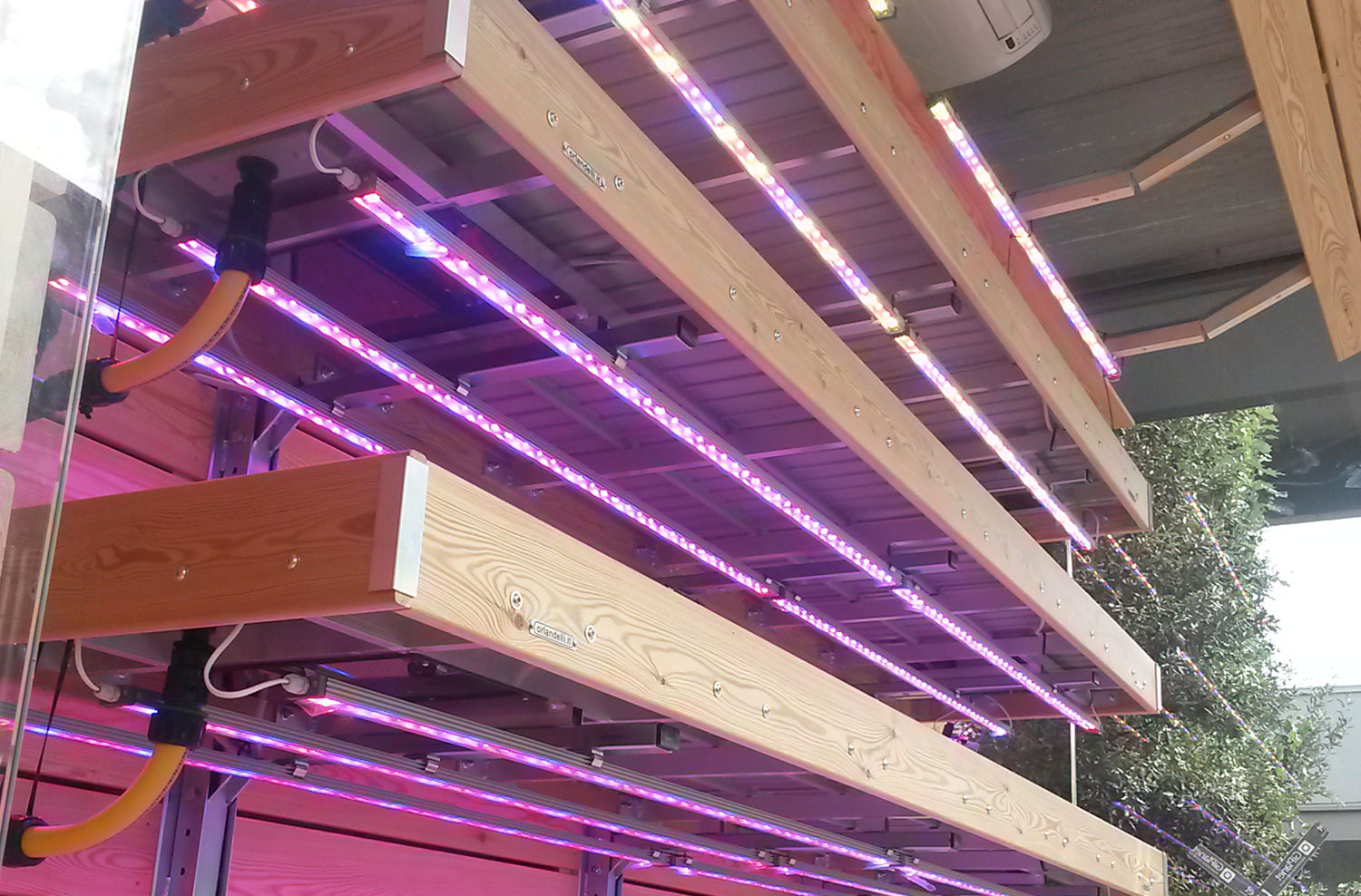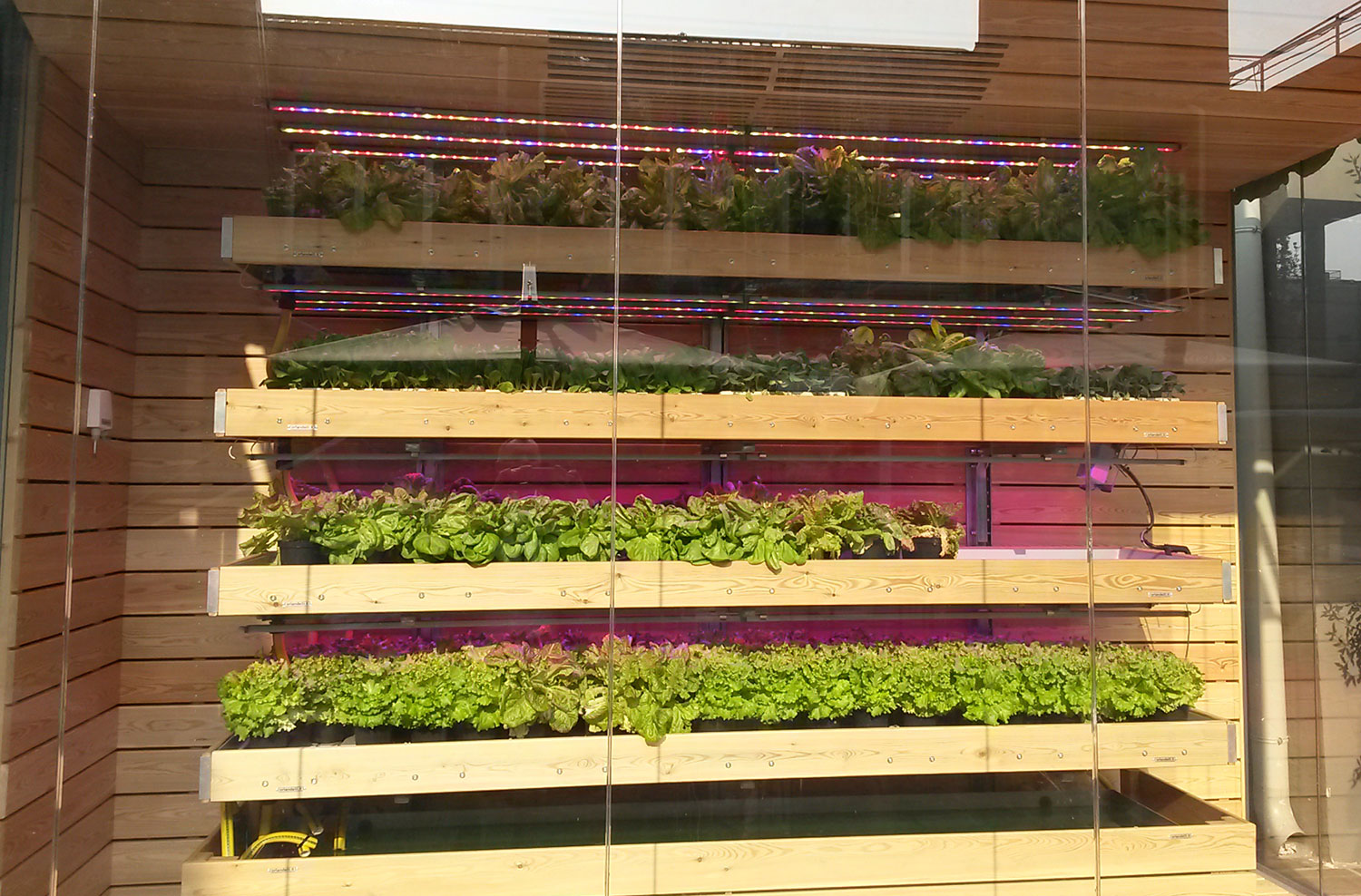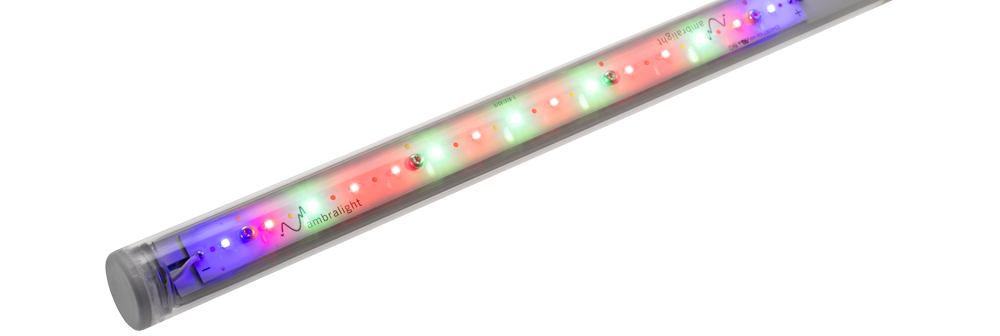In collaboration with the University of Verona and four other companies, we developed innovative indoor vertical farming systems prototype in Padua. The project’s goal was to analyze the benefits of vertical farming in terms of LED efficiency, energy use, plants growth, and the reduction of plant diseases and chemicals. This initiative supports ongoing plants research and the study of plants in a highly controlled environment. Our LED growing lights created optimal conditions for sustainable, zero-mile agriculture, showcasing how vertical farming technology can be used to grow healthy crops locally. The system allows researchers to gather crucial data while supporting a new model of responsible, high-tech food production.
The project
Over five months, complete vertical farming systems were built, featuring four levels of plants shelves, each dedicated to a different lettuce variety. The setup aimed to test innovative farming methods that improve productivity while reducing energy and water consumption. These are critical objectives in sustainable greenhouse shelving systems. Additionally, the project collected data on plant diseases and pesticide alternatives, supporting the broader study of plants. The prototype was presented at the Padua Fair, allowing the public to view live growth cycles. The harvested lettuce was then delivered to nearby restaurants, reinforcing the concept of locally sourced food through efficient and sustainable vertical farming technology.
Installation description
The vertical farm was equipped with our AE32 LED lamps, installed to provide optimal lighting conditions at every level:
- On the two lower shelves, red and blue growing lights stimulate photosynthesis and promote vigorous plants growth.
- The upper shelves use green, red, and blue light to increase uniformity and overall yield.
This custom LED lighting system ensures a balanced and effective light spectrum for each growth stage. The result is a consistent light environment across the entire setup, essential for the performance of advanced vertical farming systems. These controlled conditions allow for precise crop development, making the system highly suitable for plants research and scalable applications in urban agriculture.
Installed product
Benefits achieved
Thanks to our AE32 LED lamps, the project has already demonstrated several benefits:
- Increased productivity: faster, more uniform plants growth across all tiers.
- Reduced resource consumption: lower water and energy use compared to traditional farming.
- Environmental sustainability: fewer chemicals, more sustainable cultivation methods.
- Locally sourced food: the harvested lettuce was used in local restaurants.
This case confirms the real benefits of vertical farming when supported by advanced custom LED lighting and optimized LED lighting lamps. The project successfully demonstrates how technology, research, and sustainability can converge to redefine agricultural practices. With the right lighting tools and data-driven experimentation, indoor vertical farming can support the future of food production.

